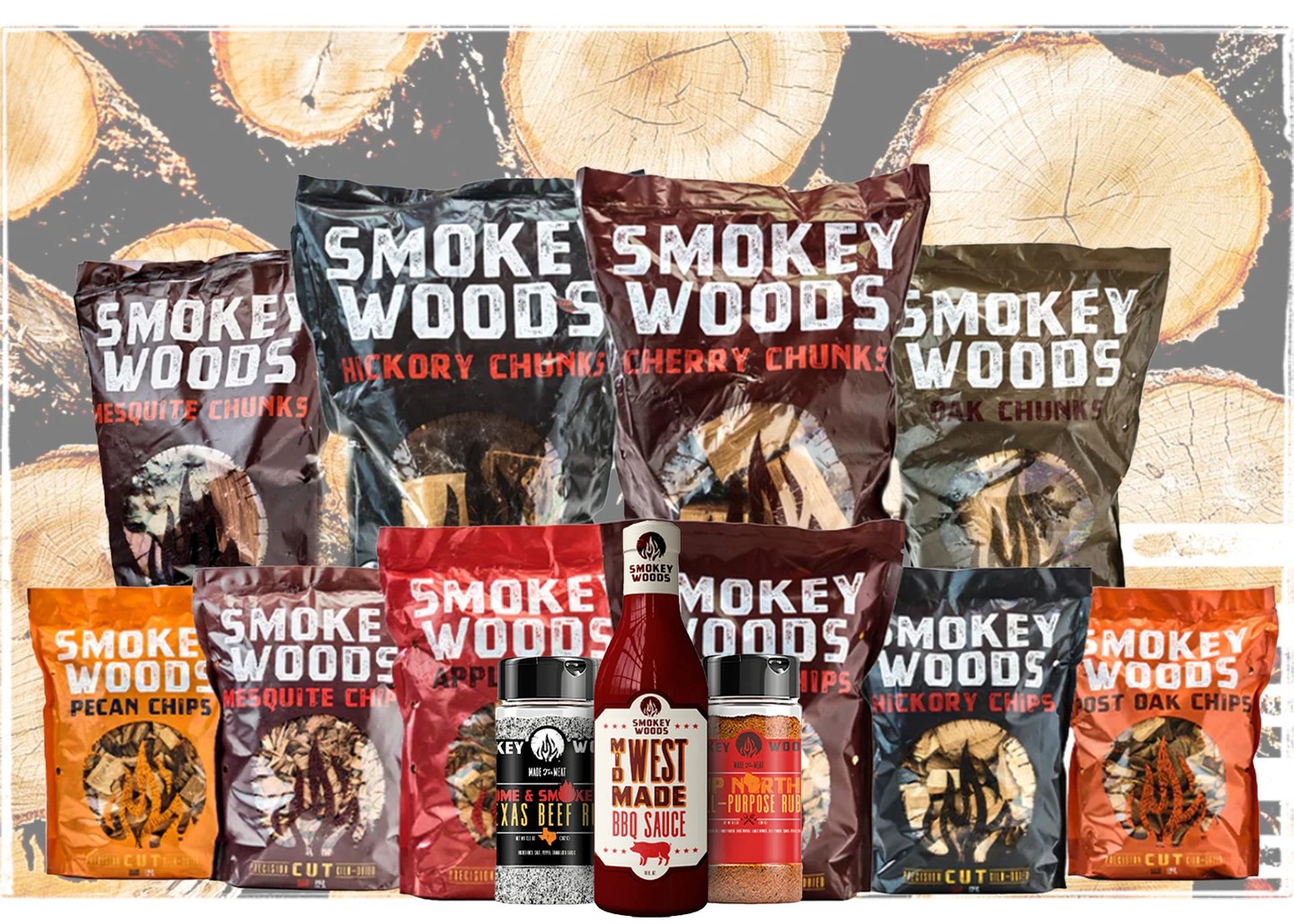If you’ve ever stood by your smoker wondering why your ribs taste “okay” but not legendary, I’ve got news for you — the secret isn’t the sauce. It’s the smoke.
Sauce is just decoration. The real magic of barbecue lives in the BBQ wood you burn – its flavor, burn rate, and the type of smoke it gives off. You can have the best brisket money can buy, but if you feed it bad wood, you’ll get bad barbecue.
Having spent years tending smokers in local restaurants and backyard cookouts, I can tell you this: your choice of BBQ wood can make or break your cook.
So, let’s dive into the science, the art, and the smoke – and figure out which wood deserves a spot next to your grill.
Why BBQ Wood Matters
Let’s start with the obvious – not all smoke is created equal.
Different woods burn differently. Some give off a sweet, mild smoke, others punch with bold, earthy tones. Some burn clean, others sputter and spit sap like a toddler refusing vegetables.
When you’re picking wood, you’re not just choosing fuel – you’re choosing flavor. Smoke becomes part of the meat, infusing it with layers of complexity that no spice rub can fake.
Think of BBQ wood like paint. You’ve got your base (the meat), your brush (the fire), and your colors (the wood). Each one changes the final masterpiece.
Understanding the Basics: Hardwood vs. Fruitwood
Every pitmaster eventually learns one truth: softwoods are the enemy.
They burn fast, produce dirty smoke, and make your meat taste like a burning Christmas tree. Stick with hardwoods – oak, hickory, pecan – and fruitwoods – apple, cherry, peach – for clean, flavorful results.
Here’s the breakdown:
- Hardwoods: Dense, steady-burning, produce stronger smoke. Great for long cooks like brisket or pork shoulder.
- Fruitwoods: Lighter, aromatic, and subtly sweet. Perfect for poultry, fish, and veggies.
Mixing the two? That’s where pitmasters start to show off – more on that later.
The Best Types of BBQ Wood and Their Smoke Profiles
There’s no one-size-fits-all. The best BBQ wood depends on your protein, your smoker, and your taste buds.
Here’s what you should actually know — not marketing fluff, but real results from the pit.
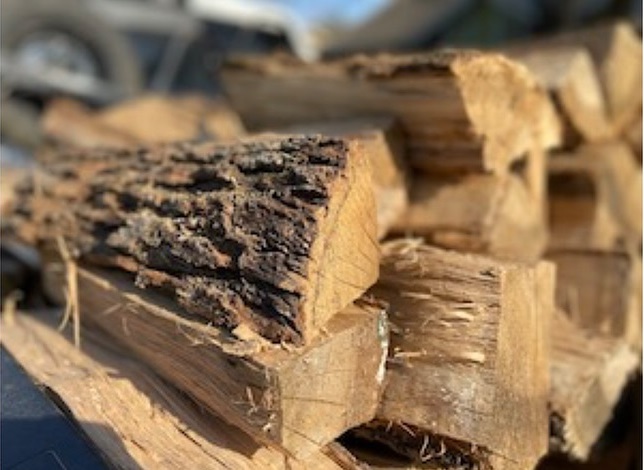
1. Oak – The All-Rounder
Flavor: Medium, balanced, slightly smoky
Best for: Brisket, ribs, lamb, or just about anything
If you’re new to smoking, start here. Oak burns evenly and gives a steady, clean smoke that doesn’t overpower. It’s like the baseline in a good song – subtle but essential.
Pro tip: Pair oak with a fruitwood like cherry or apple for a layered, restaurant-style finish.
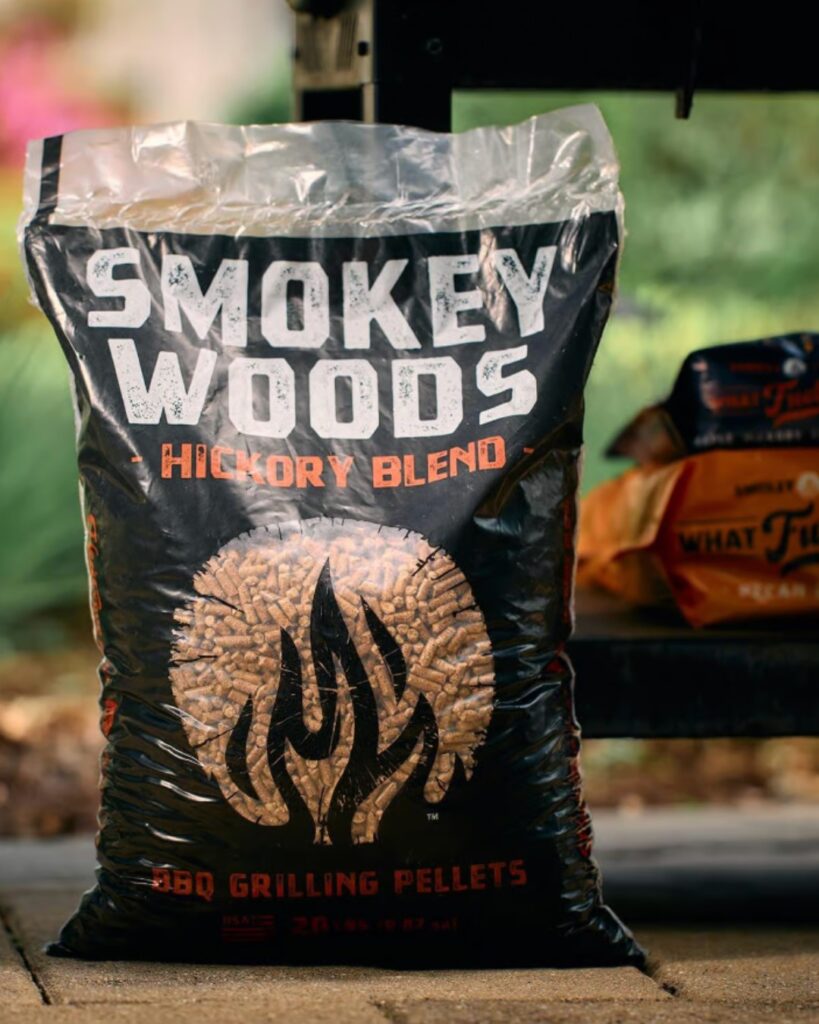
2. Hickory – The BBQ Classic
Flavor: Strong, savory, and slightly sweet
Best for: Pork shoulders, ribs, and beef cuts
Hickory is bold. Too much and you’ll turn your meat bitter, but used right, it’s the taste of classic Southern barbecue.
When you smell hickory smoke rolling off a pit, you know someone’s cooking serious meat.
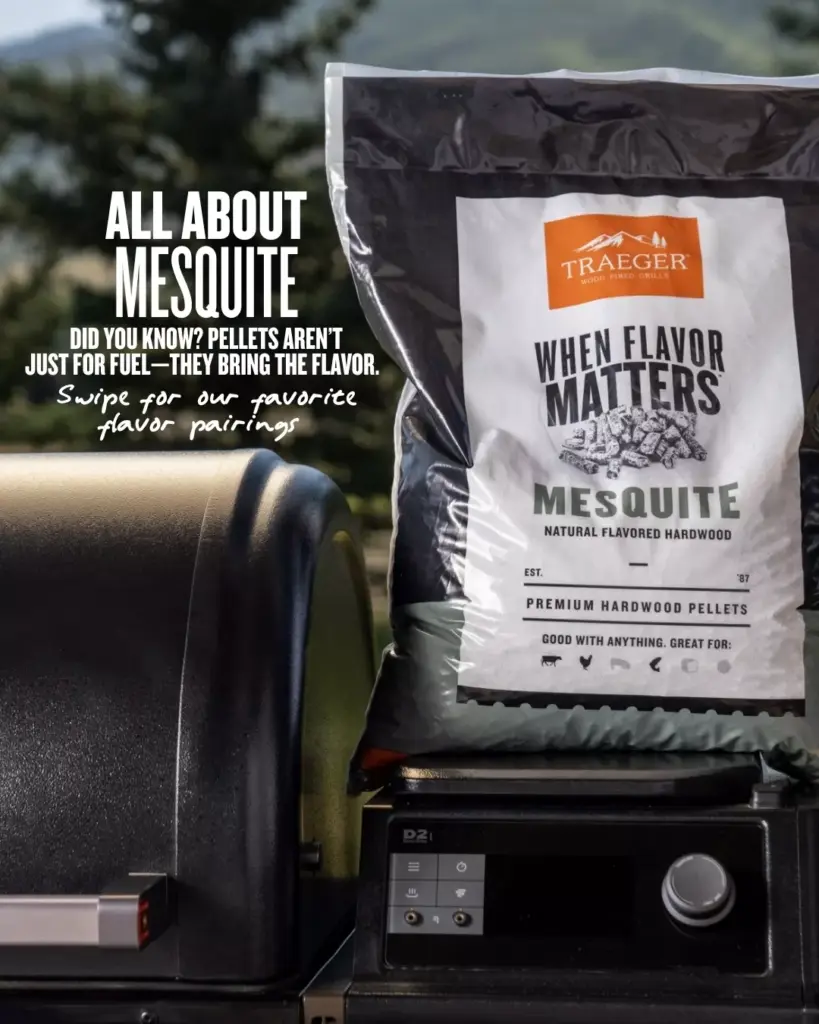
3. Mesquite – The Wild One
Flavor: Earthy, intense, and sometimes spicy
Best for: Steaks, brisket, and game meats
Mesquite is a love-or-hate wood. It burns hot and fast, so it’s great for quick sears or short cooks.
Overdo it, though, and your brisket will taste like a campfire gone wrong.
Pro advice: Blend mesquite with oak to tame its wild side.
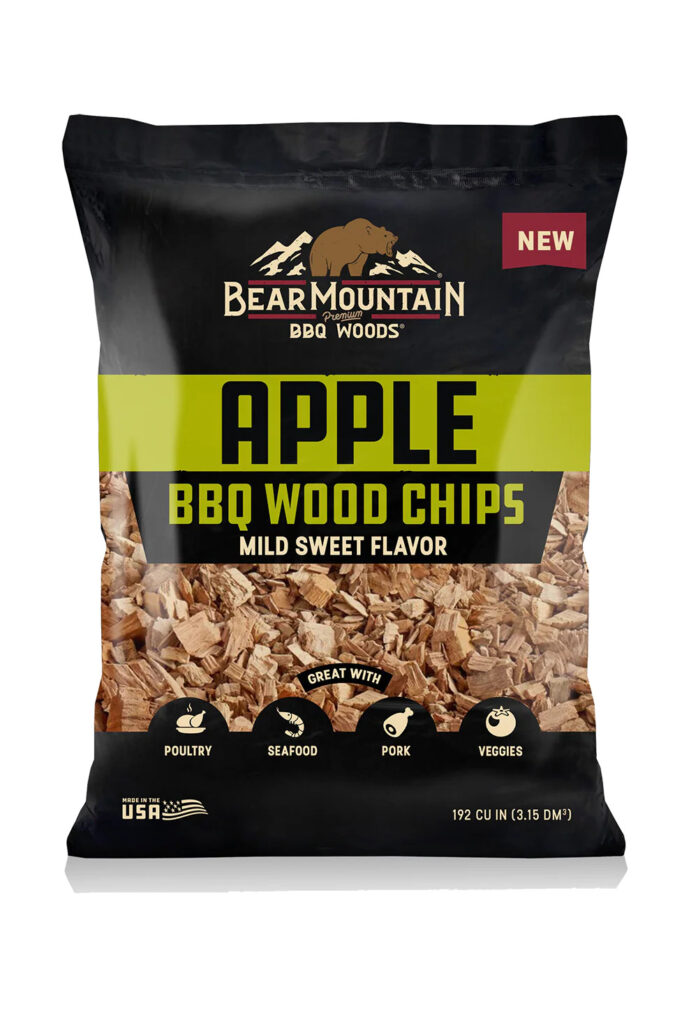
4. Apple – The Gentle Touch
Flavor: Mild, sweet, and fruity
Best for: Chicken, pork, and fish
Applewood brings a subtle sweetness that enhances without overwhelming. It’s my go-to for delicate meats or when I’m smoking for a mixed crowd.
If you want “backyard crowd-pleaser” status, applewood’s your safest bet.
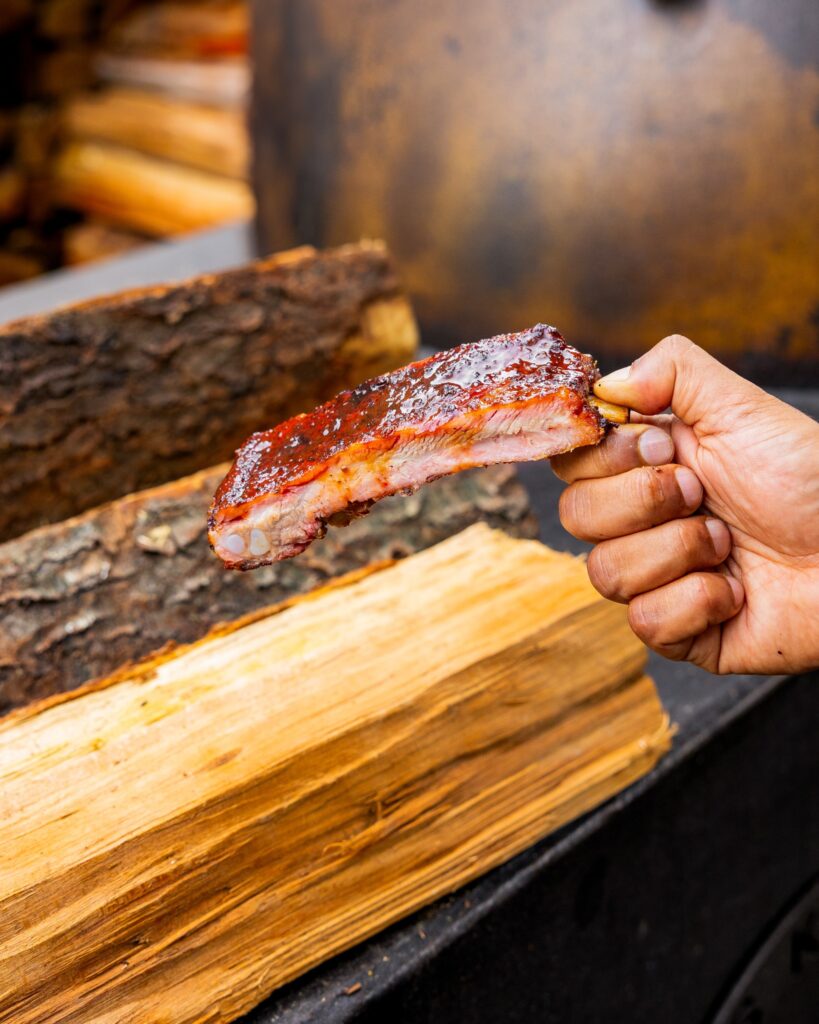
5. Cherry – The Color Maker
Flavor: Sweet, rich, slightly tart
Best for: Pork ribs, duck, and turkey
Cherry wood doesn’t just add flavor – it adds color. It gives meat that deep mahogany-red finish everyone chases.
It’s a favorite among pros because it looks as good as it tastes. Try mixing it with oak or hickory for extra complexity.
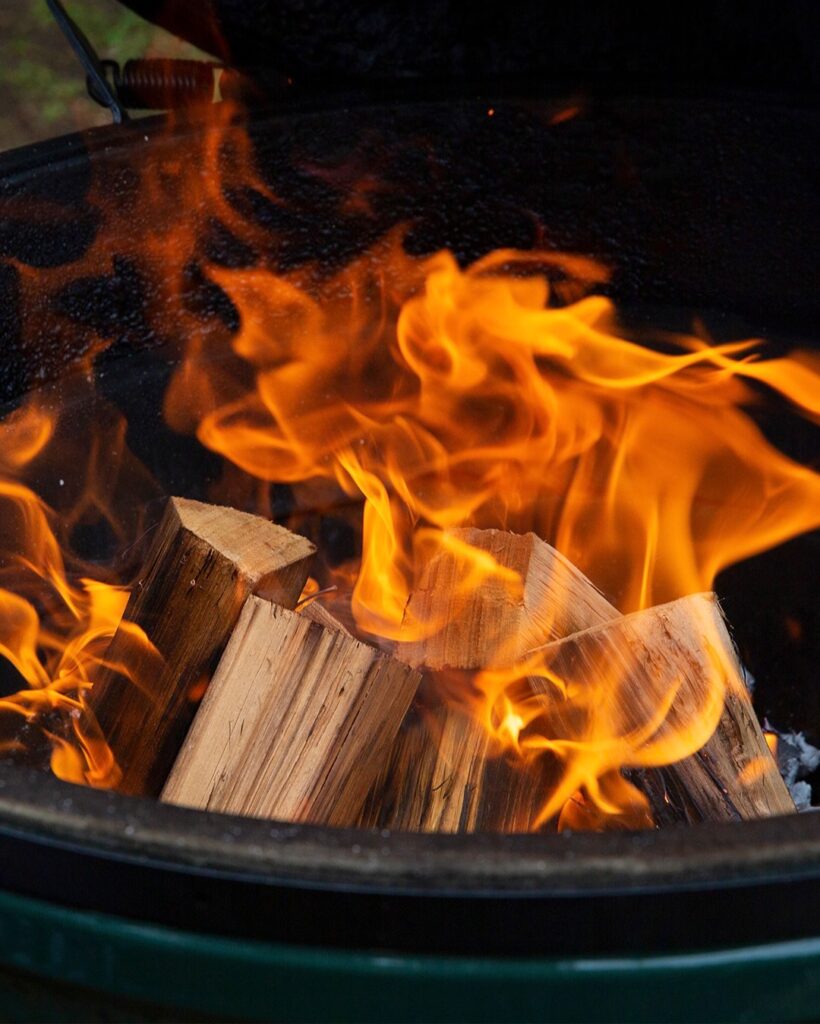
6. Pecan – The Gentleman’s Choice
Flavor: Nutty, buttery, medium smoke
Best for: Chicken, pork, even desserts
Pecan sits right between bold and mild. It’s refined – the kind of smoke that says “I care about flavor, but I also mow my lawn on schedule.”
Too much can get sweet, but paired with a bit of hickory, it’s perfection.
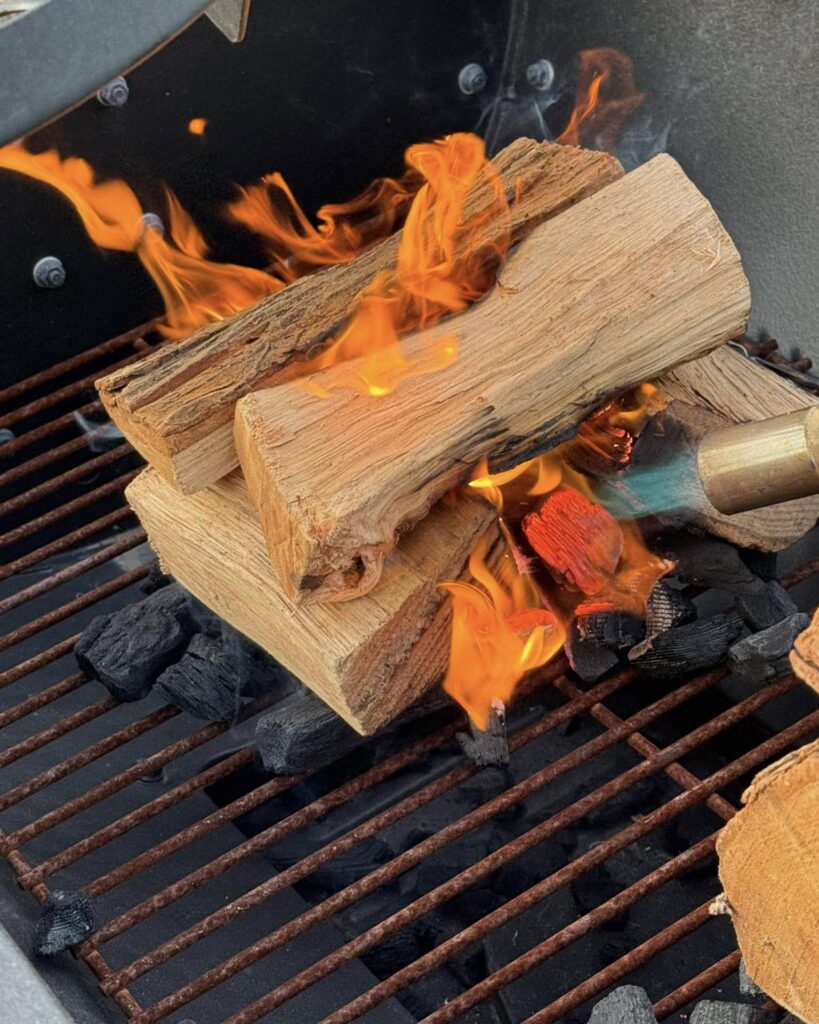
7. Maple – Subtle and Sweet
Flavor: Mild, clean, and sugary
Best for: Poultry, ham, and vegetables
Maple’s the introvert of BBQ wood – quiet, consistent, and surprisingly versatile. It’s ideal when you want to add flavor without stealing the show.
Try it with glazed ham or smoked carrots. You’ll thank me later.
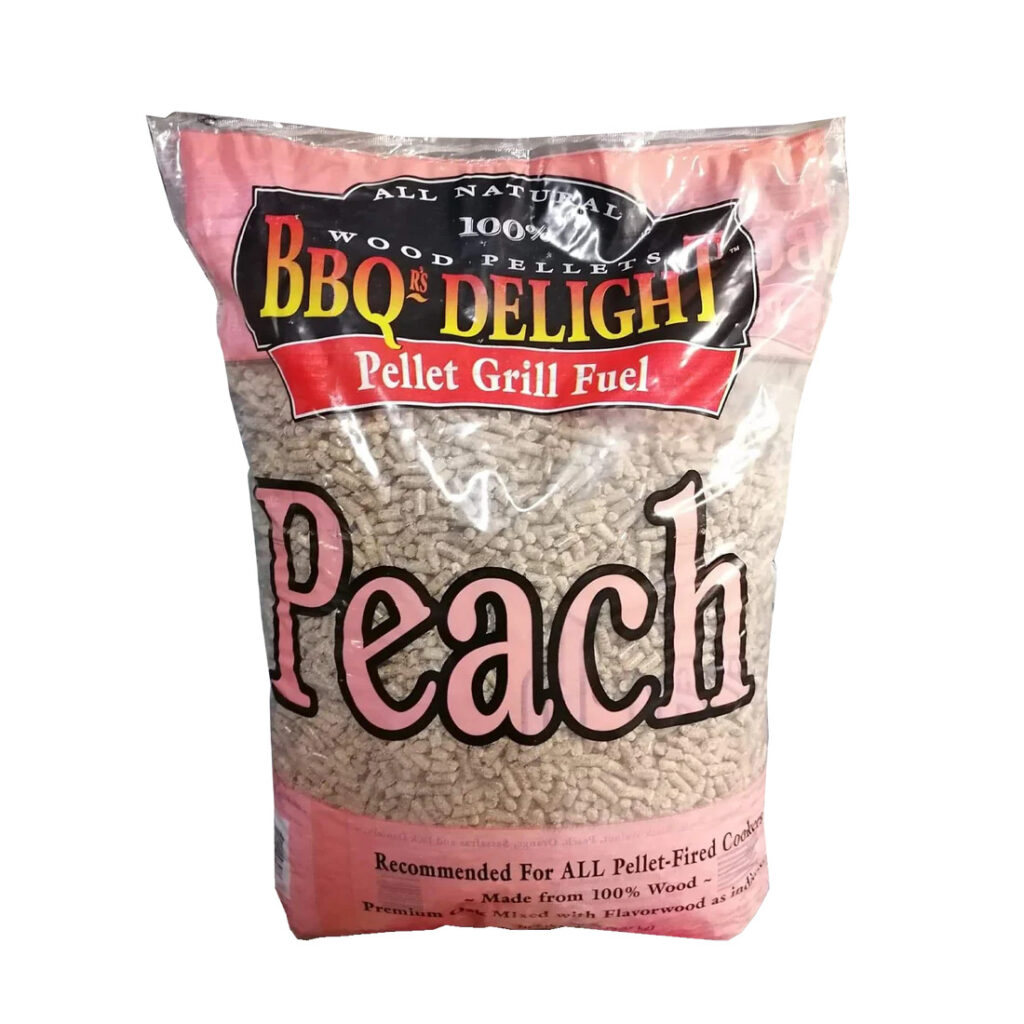
8. Peach – Fruity and Floral
Flavor: Light, fragrant, with floral undertones
Best for: Pork, poultry, and lamb
Peach wood is popular in the South for good reason — it smells amazing and leaves a light, aromatic finish on meat.
Perfect if you want to serve something that tastes as sunny as a beach day.
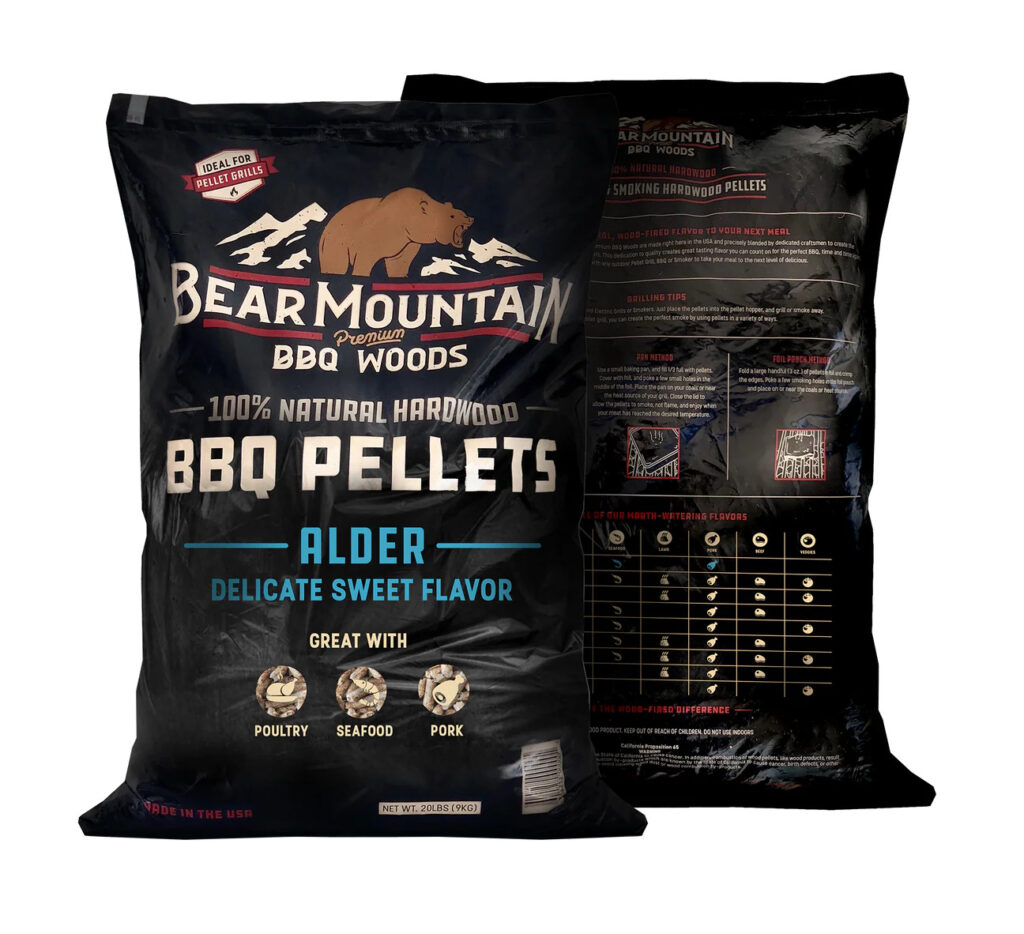
9. Alder – Clean and Gentle
Flavor: Light, earthy, and slightly sweet
Best for: Salmon, seafood, and turkey
If you’ve ever had Pacific Northwest–style smoked salmon, you’ve tasted alder.
It’s delicate and consistent, great for fish or lighter meats that don’t need heavy smoke.
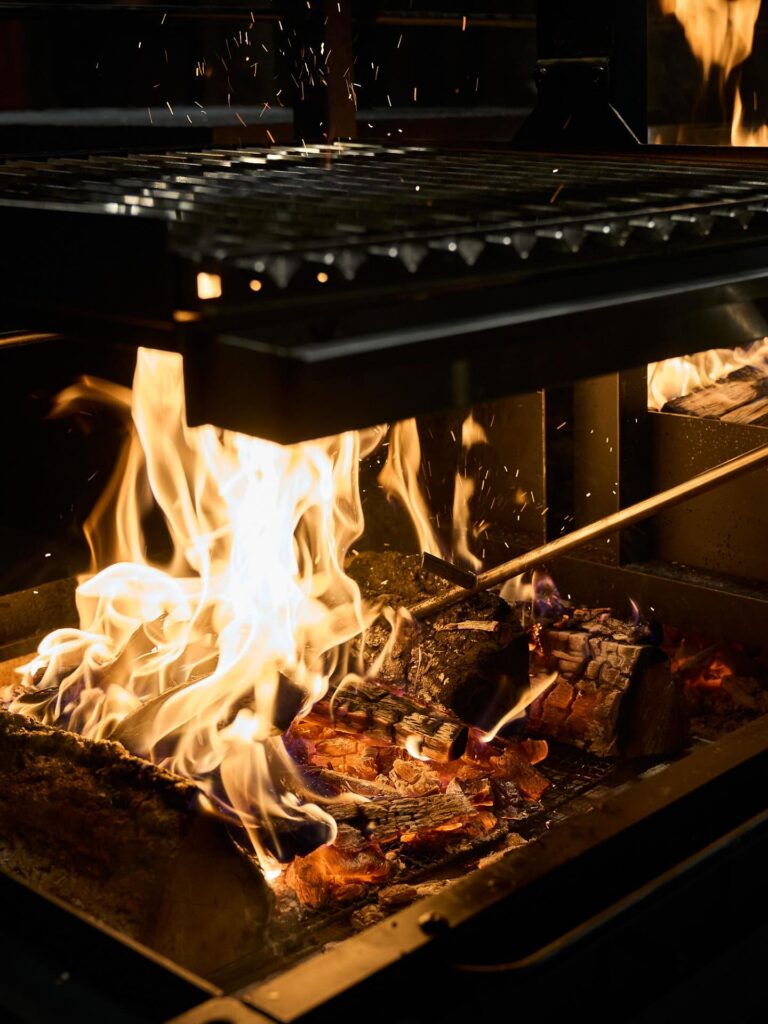
10. Post Oak – The Texas Standard
Flavor: Smooth, mild, slightly earthy
Best for: Brisket and large cuts of beef
This is the wood that powers the great briskets of Central Texas. It burns evenly and produces that signature blue smoke pitmasters brag about.
If oak is your everyday wood, post oak is your championship wood.
Matching BBQ Wood to Meat: The Flavor Pairing Playbook
Choosing the right wood for the right meat is where good barbecue becomes great barbecue.
Here’s a quick cheat sheet from years of testing, tasting, and (occasionally) over-smoking:
| Meat | Best Woods | Flavor Profile |
| Beef | Oak, Hickory, Mesquite, Post Oak | Bold, earthy, smoky |
| Pork | Apple, Cherry, Pecan, Oak | Sweet, balanced |
| Chicken | Apple, Maple, Peach | Light, clean, sweet |
| Fish | Alder, Maple, Apple | Mild, delicate |
| Lamb | Oak, Cherry, Hickory | Rich, aromatic |
| Game | Mesquite, Hickory, Cherry | Deep, smoky, complex |
Pitmaster’s rule: when in doubt, go mild. You can always add more smoke, but you can’t un-smoke a brisket.
Blending Woods Like a Pro
Here’s where you separate backyard enthusiasts from true pitmasters.
Blending BBQ wood gives you custom flavor profiles that store-bought charcoal can’t touch.
Some of my favorite combos:
- Oak + Cherry: Balanced and slightly sweet – perfect for ribs.
- Hickory + Apple: Classic Southern mix for pork shoulder.
- Mesquite + Pecan: Big Texas energy – bold but rounded.
Stick to two woods max. More than that and you’ll turn your flavor into noise.
Choosing the Right Wood Format
Not all BBQ wood comes in the same form. The right type depends on your smoker:
- Logs: Great for offset smokers. Long burns, steady heat.
- Chunks: Perfect for ceramic smokers and charcoal grills.
- Chips: Best for gas or electric smokers; soak them if needed.
- Pellets: Consistent flavor and easy control for pellet grills.
Important: Always use seasoned, untreated wood. No bark, paint, or chemicals. If it smells like a lumberyard, don’t burn it.
Common Wood Mistakes (That Even Pros Make)
You can buy the best BBQ wood on the market, but if you use it wrong, it’ll ruin your cook.
Avoid these common blunders:
- Using green wood. It’s still full of moisture – you’ll get bitter, heavy smoke.
- Over-smoking. Once your meat turns black, it’s too late.
- Mixing too many woods. You’ll end up with confused flavor.
- Using softwoods. Pine and cedar belong in campfires, not smokers.
- Poor airflow. You want thin, blue smoke, not thick white clouds.
Remember: white smoke means harsh flavor. Blue smoke means magic.
Pro Tips for Perfect Smoke
These are the lessons you only learn the hard way – or by listening to a pitmaster who already did:
- Season your wood. Let it dry for 6–12 months before burning.
- Control your airflow. Oxygen makes or breaks clean smoke.
- Start small. Add wood gradually, especially with strong woods like hickory or mesquite.
- Watch the smoke, not the clock. Good smoke smells sweet, not sharp.
- Experiment. Every smoker and wood combo behaves differently – that’s half the fun.
And remember, the best BBQ doesn’t come from following a strict recipe – it comes from paying attention to your fire.
Final Thoughts: Smoke Is the Soul of BBQ
Anyone can grill a steak. But mastering BBQ wood – that’s what turns you from a weekend warrior into a pitmaster.
The right wood adds dimension, aroma, and personality to your food. It’s what separates good barbecue from unforgettable barbecue.
So, whether you’re using post oak for Texas brisket, applewood for pork ribs, or pecan for smoked chicken, remember:
You’re not just burning wood – you’re building flavor, one puff of smoke at a time. Because great barbecue isn’t about perfection. It’s about patience, smoke, and wood that tells a story.
Now fire up that pit – your wood’s waiting.
Featured image credit: @smokeywoodsbbq

